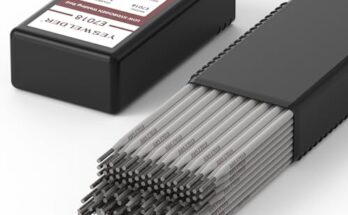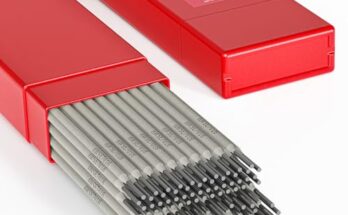Welding cast iron to mild steel can be tricky, but it’s absolutely possible if you use the right techniques. I’ve had plenty of hands-on experience with this process, and I know how frustrating it can be when things don’t go as planned.
Cast iron is brittle and doesn’t handle heat well, while mild steel is much more forgiving. Getting these two metals to bond requires patience, the right filler material, and careful heat control.

Image by theturboforums
If you’re working on a project that requires joining cast iron to mild steel, whether it’s for machinery, automotive repairs, or fabrication, I’ll walk you through the process step by step. I’ll also cover the challenges, the best welding methods, and tips to ensure a strong and long-lasting weld.
Challenges of Welding Cast Iron to Mild Steel
Before we jump into the process, it’s important to understand why welding cast iron to mild steel is challenging.
- Different Metal Properties – Cast iron is brittle and contains a lot of carbon, while mild steel is ductile and more weld-friendly.
- Heat Sensitivity – Cast iron is prone to cracking when it cools too quickly.
- Different Melting Points – Cast iron melts at a higher temperature than mild steel, making heat control crucial.
- Expansion and Contraction – These two metals expand and contract at different rates when heated, which can lead to cracking or weak welds.
Despite these challenges, you can still get a solid weld if you follow the right approach.
Best Methods for Welding Cast Iron to Mild Steel
There are a few different welding methods that work well for joining cast iron to mild steel. Choosing the right one depends on the type of project, available equipment, and your skill level.
Stick Welding (SMAW) with Nickel Electrodes
One of the best ways to weld cast iron to mild steel is with stick welding using a nickel-based electrode. Nickel electrodes (like ENiFe-CI or ENi-CI) are ideal because they allow for some flexibility, reducing the risk of cracking.
How to do it:
- Preheat the cast iron to around 500°F to reduce thermal stress.
- Use low welding currents to minimize heat input.
- Weld in short bursts (1-inch at a time) to prevent excessive heat buildup.
- Peen the weld with a hammer to relieve stress as it cools.
- Allow the weld to cool slowly by wrapping it in an insulating blanket.
Nickel electrodes are expensive, but they produce the strongest and most ductile welds for this application.
Stick Welding with Stainless Steel Electrodes
Another effective method is using stainless steel electrodes (such as 309L or 312). These electrodes don’t mix much with cast iron’s carbon, helping prevent cracking. They are a more affordable alternative to nickel rods.
How to do it:
- Preheat the cast iron, but not as much as with nickel rods (about 300°F).
- Use a short arc length and low heat to avoid overheating.
- Weld in short passes, pausing to let the metal cool slightly between runs.
- Let the weld air cool slowly to prevent stress cracks.
While stainless steel electrodes don’t provide as much ductility as nickel, they are still a good option for joining cast iron to mild steel.
TIG Welding with Nickel or Stainless Steel Filler Rods
If you have a TIG welder, you can also use it to join cast iron to mild steel. TIG welding gives you more control over heat input, which is essential for preventing cracks.
How to do it:
- Use pure nickel filler rods for the strongest weld, or stainless steel rods for a cheaper alternative.
- Preheat the cast iron to 300-500°F.
- Use a low heat setting and go slow to avoid overheating.
- Let the weld cool gradually to reduce stress.
TIG welding is great for precision work, but it requires more skill than stick welding.
MIG Welding with Nickel or Stainless Steel Wire
MIG welding isn’t the most common method for welding cast iron to mild steel, but it can work if you use the right wire. Nickel MIG wire is the best option, but it can be expensive. Stainless steel wire (309L) is a more budget-friendly choice.
How to do it:
- Set your MIG welder to low heat to avoid overheating the cast iron.
- Weld in short bursts, letting the weld cool between passes.
- If possible, preheat the cast iron to reduce thermal shock.
MIG welding is the fastest option, but it’s not as reliable as stick or TIG welding for this type of job.
Preheating and Post-Weld Cooling – Why They Matter
One of the most critical parts of welding cast iron to mild steel is managing heat before and after welding. Cast iron doesn’t like sudden temperature changes, so you need to be careful.
| Step | Why It’s Important | Best Practices |
|---|---|---|
| Preheating | Reduces thermal stress and prevents cracking. | Heat the cast iron to 300-500°F before welding. |
| Controlled Welding | Prevents overheating and stress buildup. | Use short welds (1-inch at a time) and avoid excessive heat. |
| Peening | Relieves stress in the weld. | Lightly tap the weld with a hammer after each pass. |
| Slow Cooling | Prevents cracking as the weld cools. | Wrap the part in an insulation blanket or bury it in sand. |
Skipping these steps can lead to cracks and weak welds, so don’t rush the process.
Mistakes and How to Avoid Them
When welding cast iron to mild steel, there are some common mistakes that can ruin your weld. Here’s what to watch out for:
- Using too much heat – This can cause cast iron to crack. Always use low heat settings.
- Not preheating the cast iron – Preheating prevents thermal shock and stress.
- Skipping post-weld cooling – Letting the weld cool too fast can lead to fractures.
- Choosing the wrong filler material – Nickel rods work best, followed by stainless steel.
- Not cleaning the metal properly – Remove rust, grease, and old paint before welding.
Avoiding these mistakes will help you get a strong, long-lasting weld.
Conclusion
Welding cast iron to mild steel is challenging, but with the right approach, it can be done successfully. The key is controlling heat, using the right filler material, and allowing the weld to cool slowly.
If you’re looking for the best method, stick welding with nickel electrodes is the most reliable. Stainless steel electrodes are a good alternative, and if you prefer TIG or MIG welding, nickel or stainless steel filler rods are your best bet.
Taking the time to preheat, weld carefully, and cool properly will make all the difference. Whether you’re fixing machinery, fabricating parts, or making repairs, following these steps will help you achieve a strong and durable weld.
Frequently Asked Questions
Can I weld cast iron to mild steel without preheating?
It’s possible, but not recommended. Preheating reduces stress and helps prevent cracking.
What is the best welding rod for cast iron to mild steel?
Nickel electrodes (ENiFe-CI) are the best, but stainless steel rods (309L or 312) also work.
Why does cast iron crack when welding?
Cast iron is brittle and expands/contracts differently than mild steel, which causes stress and cracks if not handled properly.
Can I use a regular MIG welder to weld cast iron to mild steel?
Yes, but you’ll need nickel or stainless steel wire for a successful weld.
If you follow these tips, you’ll have a much better chance of creating a strong, reliable weld between cast iron and mild steel. Take your time, use the right materials, and don’t skip the preheating and cooling steps!







